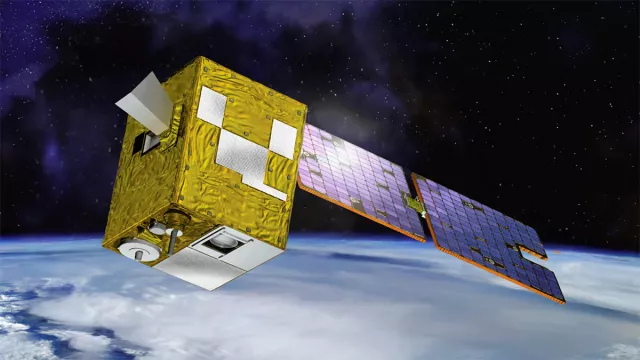Launched by CNES in 2004, the Parasol microsatellite analysed the characteristics of light reflected by Earth and its atmosphere for eight years in an effort to better understand the role of clouds and aerosols in shaping climate. Its mission came to an end in late 2013.
Key information
| Mission | Characterize the radiative properties of clouds and aerosols |
|---|---|
| Domain | Earth observation |
| Launch date | 18 December 2004 |
| Partners | CNRS |
| Where | 705-km near-Sun-synchronous orbit |
| Lifetime | 9 years (End of life of the satellite in December 2013) |
| Status | Completed |
Key figures
- 5 satellites in A-Train constellation of which Parasol was a part
- 120 kg: satellite mass
- 1 instrument
- 60 cm on a side: size of satellite
Key milestones
- 18 December 2013: End of life of the satellite Parasol
- 11 October 2013: End of Parasol’s science mission
- 26 May 2011: Mission extended 2 years
- 2 December 2009: Parasol’s orbit lowered to remove it from A-Train constellation
- 18 December 2004: Launch of Parasol by Ariane 5G+
- 1999: CNES gives go-ahead to develop Parasol mission
Project in brief
The Parasol microsatellite developed by CNES analysed the characteristics of light reflected by Earth and its atmosphere from 2004 to 2013 to gain new insights into how clouds and aerosols impact our climate. To accomplish this mission, it relied on the POLDER (Polarization and Directionality of the Earth's Reflectances) instrument developed by the LAO atmospheric optics laboratory in Lille (CNRS-USTL). Data collected daily with POLDER were then matched to measurements acquired by Aqua, Aura, Calipso and CloudSat, four satellites flying with Parasol in the A-Train, a constellation of satellites trailing one another by a few minutes in the same Earth orbit.
Parasol’s science mission came to an end on 11 October 2013. The microsatellite was subsequently removed from the A-Train constellation after a series of manoeuvres completed on 18 December 2013. In the final analysis, the mission was a great success: while Parasol was initially planned to operate for two years, it continued acquiring data for eight years for the benefit of CNES’s teams.
CNES’s role
The Parasol microsatellite was developed by CNES.
Contacts
Atmospheric Physics & Meteorology subject matter expert
Adrien Deschamps
E-mail: adrien.deschamps at cnes.fr


